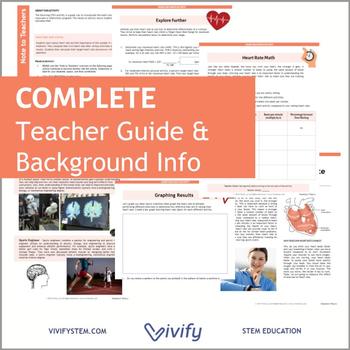Heart Rate Ratios & Graphing Activity
- PDF
What educators are saying
Also included in
- Engaging activities connecting math concepts to sports along with an engineering design challenge! Instead of boring worksheets, students will solve problems based on their own collected data and connect the concepts to cool careers! Students will be surprised to learn how much math is used in theirPrice $15.80Original Price $19.75Save $3.95
- Are you in need of year-round STEM activities? This growing bundle includes ALL Vivify K-12 STEM lessons from team challenges, engineering design, semester-long STEM units, research projects, and more! Purchase everything for 20% off individual products! Here is a sample of what is included: Stage 1Price $990.24Original Price $1237.80Save $247.56
Description
A great math activity to connect math with sports or for Valentine's Day math! Instead of boring worksheets, students will solve problems based on their own collected data and connect the concepts to cool careers!
Students learn about heart rate and the importance of this number in sports medicine. They compute their own heart rate after various activities and graph the results. They calculate the target heart rate and answer critical thinking questions.
The activity will take about 45 - 60 minutes to complete depending on student level. The activities are perfect as an in-class assignment, review activity, homework assignment, or extracurricular activity. Activities are focused on ratios and proportions concepts. Includes an introduction, career connection section, discussion questions, word problems, and extension critical thinking questions.
Looking for more STEM lessons? Our team of engineers and educators is dedicated to developing low-prep and high-quality STEM activities for any classroom! Click below to learn more:
- Vivify's Scope & Sequence + Standards Alignment
- Vivify's Resource Guide
- Learn about the 3 Stages of STEM
- Vivify STEM Membership
Customer Tips:
• Click the Green ★ to follow our store and get notifications of new products and freebies
• Leave feedback to receive TpT credit for use on future purchases
• Questions? Contact us in the Product Q&A section
♥ Connect With Us ♥
Email us: info@vivifystem.com






